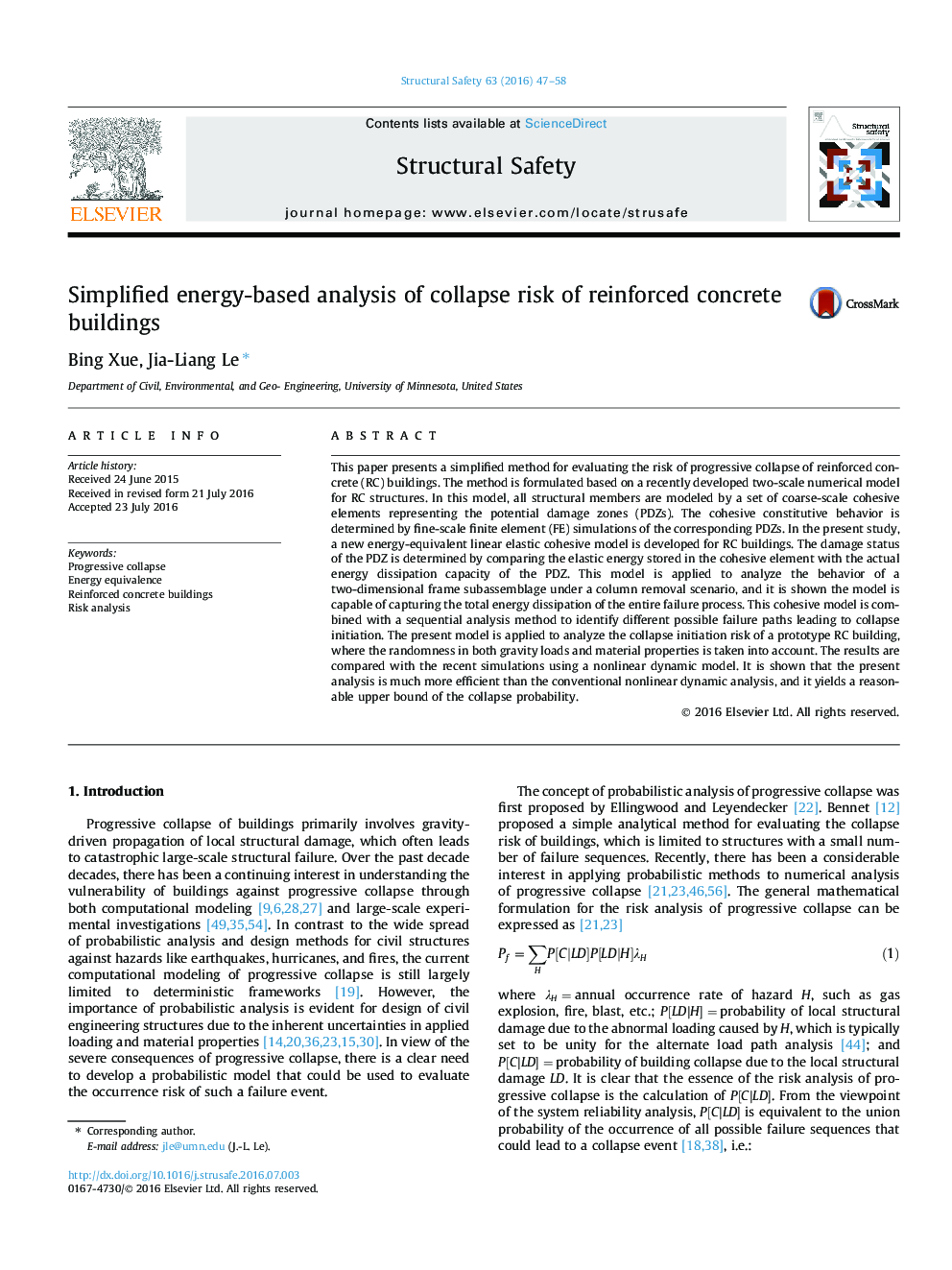| کد مقاله | کد نشریه | سال انتشار | مقاله انگلیسی | نسخه تمام متن |
|---|---|---|---|---|
| 6774145 | 513360 | 2016 | 12 صفحه PDF | دانلود رایگان |
عنوان انگلیسی مقاله ISI
Simplified energy-based analysis of collapse risk of reinforced concrete buildings
ترجمه فارسی عنوان
تجزیه و تحلیل ساده مبتنی بر انرژی از خطر سقوط ساختمان های بتن مسلح
دانلود مقاله + سفارش ترجمه
دانلود مقاله ISI انگلیسی
رایگان برای ایرانیان
کلمات کلیدی
سقوط پیشرو، همبستگی انرژی، ساختمان های بتن آرمه، تحلیل ریسک،
موضوعات مرتبط
مهندسی و علوم پایه
سایر رشته های مهندسی
مهندسی عمران و سازه
چکیده انگلیسی
This paper presents a simplified method for evaluating the risk of progressive collapse of reinforced concrete (RC) buildings. The method is formulated based on a recently developed two-scale numerical model for RC structures. In this model, all structural members are modeled by a set of coarse-scale cohesive elements representing the potential damage zones (PDZs). The cohesive constitutive behavior is determined by fine-scale finite element (FE) simulations of the corresponding PDZs. In the present study, a new energy-equivalent linear elastic cohesive model is developed for RC buildings. The damage status of the PDZ is determined by comparing the elastic energy stored in the cohesive element with the actual energy dissipation capacity of the PDZ. This model is applied to analyze the behavior of a two-dimensional frame subassemblage under a column removal scenario, and it is shown the model is capable of capturing the total energy dissipation of the entire failure process. This cohesive model is combined with a sequential analysis method to identify different possible failure paths leading to collapse initiation. The present model is applied to analyze the collapse initiation risk of a prototype RC building, where the randomness in both gravity loads and material properties is taken into account. The results are compared with the recent simulations using a nonlinear dynamic model. It is shown that the present analysis is much more efficient than the conventional nonlinear dynamic analysis, and it yields a reasonable upper bound of the collapse probability.
ناشر
Database: Elsevier - ScienceDirect (ساینس دایرکت)
Journal: Structural Safety - Volume 63, November 2016, Pages 47-58
Journal: Structural Safety - Volume 63, November 2016, Pages 47-58
نویسندگان
Bing Xue, Jia-Liang Le,
